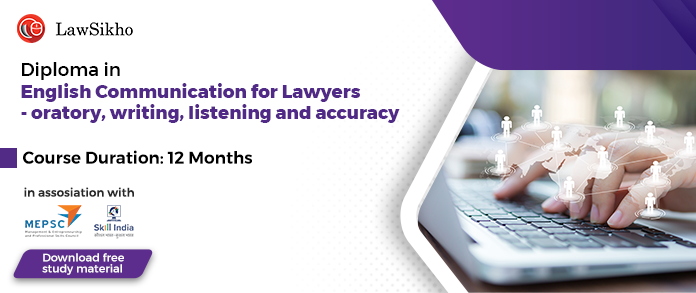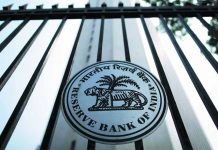This article is written by Aastha Verma, pursuing B.A.LL.B from Kalinga University, Raipur, Chhattisgarh. The article analyzes whether electronic records and newspapers reports are admissible in Indian courts or not.
Table of Contents
Electronic records as an evidence
Technology has changed and evolved rapidly with the changing needs of society. This change has been very well recognized by the courts as well as the legislature in India.
The Information Technology Act (Amendment), 2008 has explained the meaning of electronic records. As per the Act, it includes data, sound, images generated or recorded and sent or received in electronic form. As per the Indian Evidence Act, 1872, electronic records are specified under Section 65B of the Act that prescribes a distinct framework that governs the admissibility of electronic evidence. This Section was inserted through the Information Technology Act, 2000 and forms a part of Chapter V of the Act, which deals with documentary evidence. Any information contained in electronic records which are stored or copied shall also be deemed as a document and will be admissible without any further proof or production of the original. It also lays down the criteria that must be satisfied for information to be categorized as computer output.
Different types of electronic records and their admissibility
Electronic records, as per the definition under Information Technology Act, 2000, cover a wide range of formats in which data or media can be presented. It includes CD, DVD, pen drive, hard disk, video recording, etc. Each of them deals with different conditions relating to admissibility in a court of law. These kinds of electronic records are admissible as primary and secondary sources of evidence. Original media must be stored or recorded directly in CD, DVD, pen drive, etc., that was self-generated or created without any human intervention. If a CD is a copy of the original and is a duplicate version, it would have to pass the admissibility test under Section 65B of the Indian Evidence Act, 1872. Otherwise, secondary evidence in electronic form will not be considered by the court as a piece of valid evidence.
Evidence available through video conferencing
In the case of V. Rama Naidu and Another v. Smt. V. Rama Devi (2018), the Court held that Judiciary aims to dispense justice and speed up the process by taking evidence by way of video conferencing.
In the case of Twentieth Century Fox Film Corporation v. Nri Film Production Associates (2003), certain conditions are highlighted which should be followed while accepting video conferencing. These conditions ensure that the procedure laid down in relevant case laws regarding the admissibility of evidence is followed properly, ensuring a fair trial.
Evidence in the form of emails, media, and calls generated through mobile phones are presumed under Section 88A of the Indian Evidence Act, 1872, which the court follows while taking email as evidence. E-mails are generally submitted by way of prints out along with the certification under Section 65B of the Indian Evidence Act, 1872.
In the case of Om Prakash v. State of Madhya Pradesh (2021), it was held that mobile phones can be a very useful resource when it comes to evidentiary values. Mobile phones can be used for tracking location, call records, and submitting media like pictures and videos.
Are newspapers admissible in India
The court of law requires several evidence and witnesses to be present before the court for proving the statement and accusation. People believe whatever is written in the newspaper is to be true and act accordingly. There is a procedure that is to be followed by every court before reaching the decision. Filing of the suit, the appearance of accused, evidence, framing of charges, trial examination, questioning of accused under Section 313 of Code of Criminal Procedure, 1973, arguments in both the side and at last judgment.
Even tribunals are required to follow the principle of natural justice though they are not required to follow the Code of Civil Procedure, (CPC) 1908 and Code of Criminal procedure, 1973 strictly, to ensure that justice has been delivered in a fair, reasonable, and just manner. The evidence in the court follows a hierarchy order to prove the allegations. Primary evidence under Section 62 of the Indian Evidence Act, 1872 holds the highest position whereas hearsay evidence is permitted only on strict conditions.
A primary source of evidence includes historic or legal documents, experimental observations and statistical data of the survey, pieces of creative writing, interviews, blogs, etc. Hence, a newspaper report can be called primary evidence if it has an original copy without any views of further interpretation.
Secondary evidence is denied under Section 63 of the Indian Evidence Act, 1872. It is admissible by the court when there is not any primary evidence. This evidence describes analyses and interprets upon the primary sources. Sometimes, external sources mislead the evidence which makes it a less reliable source of evidence. Thus, newspaper articles, journals, and magazines can only be considered secondary evidence.
Hearsay evidence
The word ‘hearsay evidence’ means any information which a person gathers or collects from a person who has first-hand knowledge of that fact or information. Hearsay evidence is not admissible in a court of law. Following are the reasons why hearsay evidence is not relevant as primary evidence:
- The person who gives the statement does not feel any responsibility for whatever he is saying.
- The truth is weakened and diminished with every repetition.
- It gives an adequate scope for fraudulent activities.
Exceptions
In certain circumstances, the court allows hearsay evidence. These exceptions are given under Section 6 and Section 32 of the Indian Evidence Act, 1872.
Section 6 defines “the rule of Res Gestae”, which says that there are certain facts that are so connected with the fact in issue they form a part of the same transaction. Such facts are referred to as relevant facts and are admissible in the court of law.
Section 32 defines the ”Dying Declaration” that implies a written or verbal statement of being admissible on behalf of the person who is dead or is incapable of giving the evidence, or who cannot be found. Therefore, hearsay evidence is not admissible in the court with getting clear and justifiable reason as to its credibility.
Case law
S. P. Shenbagamoorthy v. Dr. Chenna Reddy (1994)
Petitioner’s contentions
According to the petitioner, the respondent was not approving the files and deliberately postponing to give assent to the laws that have been passed by the legislature sent for his consent concerning disregard of the present government and on several occasions, he creates apprehension in the minds of people in Tamil Nadu. Congress was making use of the office of the Governor to dismiss the Government of Tamil Nadu. In all functions where he has attended as a chief guest made the speech without any provocation and expressed his expression to dismiss the present government. Thus he has violated Article 159 of the Indian Constitution under which he has taken an oath.
According to the petitioner, the comments made by the respondent are underwarrented and therefore, the respondent is not fit for holding the position of governor in Tamil Nadu, as he is doing so against the interests of the people. Along with the writ petition, the petitioner has filed a newspaper cutting in The Hindu.
The counsel of the petitioner is relying on the news published in The Hindu. He has also reiterated the other allegations made in the affidavit.
Respondent’s view
The respondent counsel said that it becomes necessary for the court to consider whether a newspaper report by itself is admissible in evidence. It is a settled principle of law that new reports published in newspapers are only hearsay secondary evidence unless proved by evidence. He further referred to the Supreme Court’s judgment in the case of Laxmi Raj Shetty And Anr v. State of Tamil Nadu (1988), wherein the court held that the notice of facts stated in newspapers cannot be taken unless it is proved by evidence. It is only hearsay evidence. A newspaper is not the document referred to under Section 78(2) of the Indian Evidence Act, 1872, by which allegation can be proved. The presumption of genuineness attached under Section 81 of the Indian Evidence Act, 1872 to a newspaper report cannot be treated as proved of fact. The facts contained in the newspaper are merely hearsay evidence and are inadmissible in a court of law.
Judgment of the Court
The Madras High Court held that newspaper reports are by themselves not evidence of the content. Those reports are only hearsay evidence. In this case, neither the reporter nor his report produced can amount to proving the contents of the newspaper reporter. Newspaper is secondary evidence and is not admissible without any proper proof of the content under the Indian Evidence Act, 1872. The judge cannot treat the newspaper as duly proved by the production of copies of the newspaper.
As per Article 156 of the Indian Constitution, the governor holds office during the pleasure of the president. So it is not open to the petitioner to make an allegation in an affidavit on a mere newspaper report and come to court as it is a Public Interest Litigation (PIL). Further, added that before approaching the court there should be a definite allegation made in the affidavit. The allegations made in the affidavit are from a newspaper report and nothing else. The petitioner has not given any other material fact before the court. The court said that allegations made against the respondent are based on newspaper reports and not on the personal knowledge of the petitioner. “I do not find any merit in the writ petition and therefore it is liable to be dismissed”.
Before concluding, the court held that facts stated in the news report are hearsay secondary evidence which is not proved by any other material facts and therefore it is inadmissible in the eyes of law. The petitioner has also failed to let in any other material in proof of facts contained in the newspaper. Further, the learned counsel has not put forward any other point before the court. The writ petition, therefore, fails and is dismissed. However, there will be no order as to costs.
Conclusion
With the enactment of the Information Technology Act, 2000 and subsequent amendment in the Indian Evidence Act, 1872 the use of electronic records in judicial proceedings has long gone. Electronic records are admissible as in primary as well as a secondary form of evidence, subject to the fact that they are accurate, exclusion of possibility or tampering or manipulation are relevant and reliable. Also, it is important to check Section 65B of the Indian Evidence Act, 1872 without which an electronic record in form of secondary evidence is not admissible in the eyes of law.
The news reports are hearsay secondary evidence which is inadmissible in the eyes of law if the individual has not any other material facts which can prove the facts contained in the news report. Also, the Court held that newspapers cannot be the basis of filing Public Interest Litigation (PIL) parties must do adequate research before approaching the court. Further held that newspaper reports are inadmissible under Section 81 of Indian Evidence Act, 1872, unless the reporter concerned is examined and cross-examined in the court.
References
- https://legislative.gov.in/sites/default/files/A1872-01.pdf
- https://indiankanoon.org/doc/1194737/
- https://www.mondaq.com/india/trials-appeals-compensation/944810/use-of-electronic-evidence-in-judicial-proceedings
- https://www.scconline.com/blog/post/2017/12/07/newspaper-reports-cannot-basis-filing-pil-party-must-adequate-research-approaching-court/
- https://www.scconline.com/blog/post/2020/07/14/sc-clarifies-law-on-admissibility-of-electronic-evidence-without-certificate-under-section-65b-of-evidence-act-1872/
- https://corporate.cyrilamarchandblogs.com/2021/01/supreme-court-on-the-admissibility-of-electronic-evidence-under-section-65b-of-the-evidence-act/
LawSikho has created a telegram group for exchanging legal knowledge, referrals and various opportunities. You can click on this link and join:
https://t.me/joinchat/J_0YrBa4IBSHdpuTfQO_sA
Follow us on Instagram and subscribe to our YouTube channel for more amazing legal content.
 Serato DJ Crack 2025Serato DJ PRO Crack
Serato DJ Crack 2025Serato DJ PRO Crack











 Allow notifications
Allow notifications



